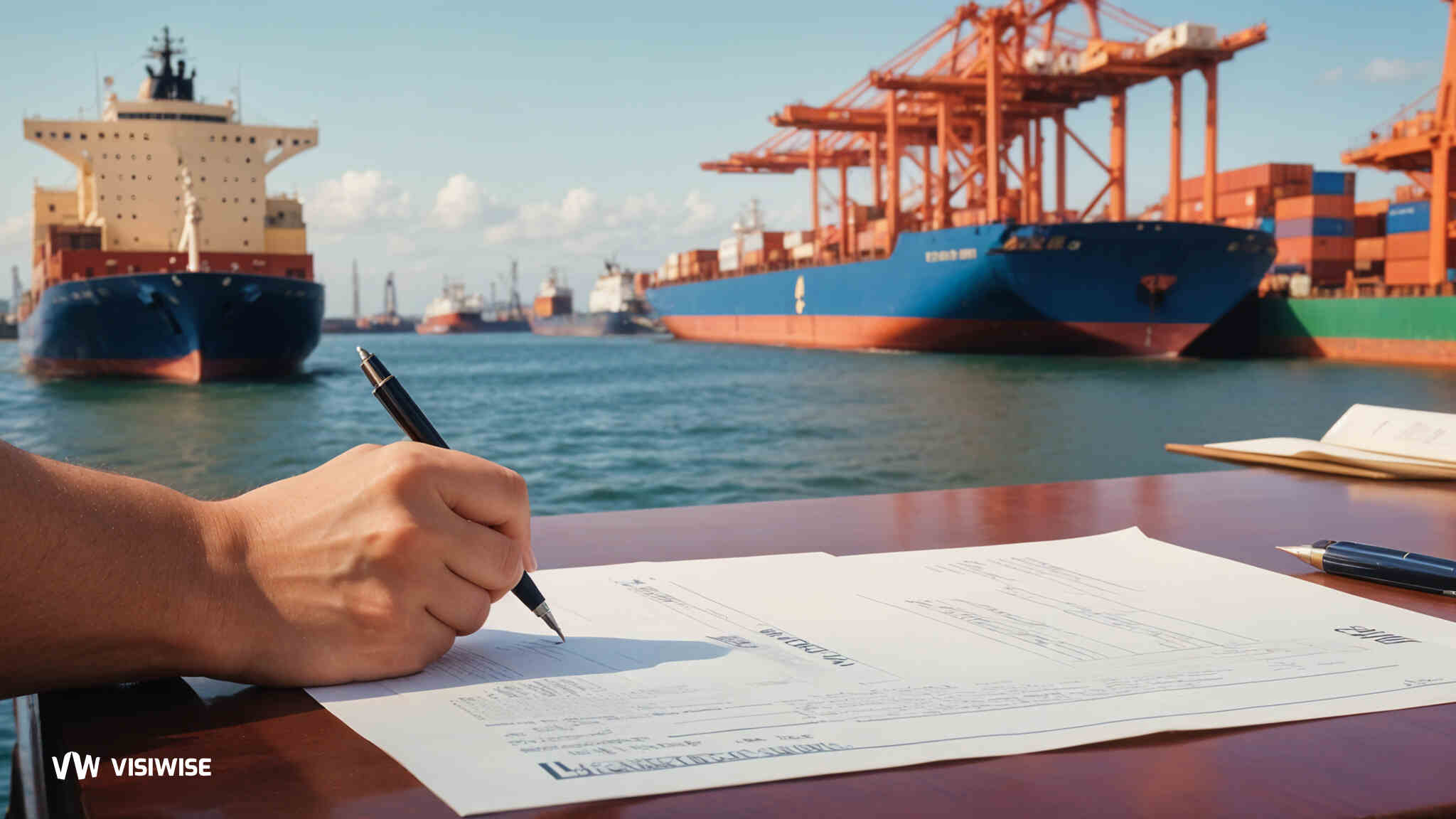A Bill of Lading (B/L) is a critical document in the shipping and logistics industry, serving as both a receipt for goods and a contract of carriage between a shipper and a carrier. The issuance of this document is pivotal to the smooth functioning of global trade, as it not only facilitates the transfer of goods but also ensures the proper management and tracking of shipments.
Key Players Involved in Issuing a Bill of Lading
- Carrier:
The primary issuer of a Bill of Lading is the carrier, which is the company or entity responsible for transporting the goods from the point of origin to the destination. Carriers can be shipping lines, airlines, trucking companies, or rail operators. When the carrier takes possession of the cargo from the shipper, it issues the Bill of Lading to acknowledge receipt of the goods under specified terms and conditions. The document outlines details such as the type and quantity of goods, the destination, and the condition of the cargo at the time of shipment.
- Freight Forwarder:
In many cases, especially in international trade, a freight forwarder acts as an intermediary between the shipper and the carrier. Freight forwarders often issue a House Bill of Lading (HBL) on behalf of the shipper, while the actual carrier issues a Master Bill of Lading (MBL). The HBL is issued to the shipper, while the MBL is issued to the freight forwarder by the carrier. The freight forwarder then manages the shipment process, ensuring that the goods reach their destination in accordance with the terms agreed upon by the shipper and the carrier.
- NVOCC (Non-Vessel Operating Common Carrier):
An NVOCC is a type of freight forwarder that does not operate its own vessels but issues its own Bills of Lading. In this scenario, the NVOCC acts as both a shipper to the carrier and a carrier to the shipper. The NVOCC issues a Bill of Lading to the shipper, which functions similarly to the HBL, while the actual carrier (such as a shipping line) issues an MBL to the NVOCC.
- Shipper:
Although shippers do not typically issue Bills of Lading, they play a crucial role in the process. The information provided by the shipper is used by the carrier or freight forwarder to create the Bill of Lading. This information includes the description of the goods, packaging details, and any special handling instructions. The accuracy of the Bill of Lading depends on the details supplied by the shipper.
- Customs Broker:
While not directly involved in issuing a Bill of Lading, customs brokers are often engaged in the process of preparing and submitting the necessary documents for customs clearance. They may assist in ensuring that the Bill of Lading contains the required information for a smooth customs process. Their role underscores the importance of accuracy and compliance in the documentation process.
Types of Bills of Lading
Below are 15 common types of Bills of Lading. Please note that this list is not exhaustive:
- Clean Bill of Lading: Issued by the shipping company or its agents without any declaration of defective goods or packaging.
- Received for Shipment Bill of Lading: Issued by a carrier as proof of receipt of goods for shipment. It is issued before the goods are loaded onto the vessel, so it is not an onboard bill of lading.
- Through Bill of Lading: More complex than most bills of lading, this document allows the cargo to pass through multiple modes of transportation or distribution centers. It may include both an Inland Bill of Lading and an Ocean Bill of Lading.
- Claused Bill of Lading: Issued when the cargo is damaged or some quantity is missing.
- Container Bill of Lading: Provides information about goods delivered in secure containers from one port to another.
- House Bill of Lading: Generated by an Ocean Transport Intermediary, freight forwarder, or non-vessel operating company. It acknowledges receipt of goods and is issued to suppliers when the cargo is received. Also known as a Forwarders Bill of Lading.
- Master Bill of Lading: Created by shipping companies for their carriers as a receipt of transfer. It specifies the terms required for transporting the freight, including details of the consignor, consignee, and the party in possession of the goods.
- Charter Party Bill of Lading: An agreement between a charterer and a vessel owner, issued by the charterer to the shipper for goods shipped on board.
- Multi-Modal Transport Document/Combined Transport Document: A type of Through Bill of Lading involving at least two different modes of transport, such as land and sea.
- Stale Bill of Lading: Presented for negotiation after 21 days from the shipment date or after a different specified period in the documentary credit.
- Short-Term/Blank Back Bill of Lading: Issued when the detailed terms and conditions of the carriage contract are not provided on the Bill of Lading.
- Straight Bill of Lading: Indicates that the goods are consigned to a specific person and is not negotiable beyond existing equities. Also known as a non-negotiable bill of lading, though not considered safe by bankers.
- Order Bill of Lading: A bill that includes language making it negotiable, typically stating that delivery is to be made to the order of the consignee.
- Bearer Bill of Lading: Specifies that delivery will be made to whoever holds the bill. This type can be specially created or derived from an order bill with a blank endorsement. It can be negotiated by physically handing it over.
Master Bill of Lading (MBL) and House Bill of Lading (HBL): Key Differences and Roles in Shipping
In international shipping, two essential types of Bills of Lading are commonly used: the Master Bill of Lading (MBL) and the House Bill of Lading (HBL). Both serve critical roles in the logistics chain, but they differ in terms of who issues them, their purpose, and the parties involved. Understanding these differences is crucial for shippers, freight forwarders, and consignees alike
What is a Master Bill of Lading (MBL)?
The Master Bill of Lading (MBL) is a document issued by the actual carrier, such as an ocean shipping line, airline, or trucking company. This document is created when the carrier takes possession of the goods from the shipper or freight forwarder for transport to the final destination.
Key Features of an MBL:
- Issuer: The MBL is issued by the carrier directly responsible for the transportation of the goods.
- Parties Involved: The MBL typically names the freight forwarder as the shipper and the overseas counterpart or final consignee as the receiver of the goods.
- Purpose: It acts as a contract of carriage between the carrier and the freight forwarder, detailing the terms of shipment, such as the type and quantity of goods, the route, and the destination.
- Negotiability: The MBL can be negotiable or non-negotiable, depending on the terms specified. A negotiable MBL allows for the transfer of ownership by endorsement, making it a key document in international trade.
- Customs Clearance: The MBL is often required for customs clearance at the destination port, as it provides official documentation of the goods being transported.
What is a House Bill of Lading (HBL)?
The House Bill of Lading (HBL) is a document issued by a freight forwarder or Non-Vessel Operating Common Carrier (NVOCC) to the shipper. The HBL is created when the freight forwarder arranges for the transportation of goods, typically consolidating shipments from multiple shippers under one MBL.
Key Features of an HBL:
- Issuer: The HBL is issued by the freight forwarder or NVOCC to the original shipper.
- Parties Involved: The HBL names the original shipper as the consignor and the consignee as the receiver. The consignee could be a buyer, an agent, or a branch office at the destination.
- Purpose: The HBL serves as a receipt for the shipper, detailing the cargo, its condition, and terms of shipment. It functions as a contract between the shipper and the freight forwarder, outlining responsibilities and liabilities.
- Negotiability: Like the MBL, the HBL can be negotiable or non-negotiable. A negotiable HBL can be endorsed and transferred, allowing the consignee to assign the cargo to another party.
- Control Over Goods: The HBL gives the shipper or consignee control over the goods, especially in cases where the freight forwarder is coordinating the delivery or splitting shipments upon arrival.
Differences Between MBL and HBL
- Issuer:
MBL: Issued by the carrier (e.g., shipping line, airline).
HBL: Issued by the freight forwarder or NVOCC.
- Parties Involved:
MBL: Typically involves the freight forwarder as the shipper and the consignee or agent at the destination.
HBL: Involves the original shipper and the consignee, often reflecting the true buyer and seller in the transaction.
- Purpose:
MBL: Serves as a contract of carriage between the carrier and the freight forwarder.
HBL: Serves as a contract of carriage between the shipper and the freight forwarder.
- Documentation:
MBL: Used for customs clearance, representing the actual carrier’s acknowledgment of cargo receipt and obligation to transport.
HBL: Used by the shipper for tracking and managing the shipment, often required by banks in Letter of Credit (LC) transactions.
- Negotiability:
Both documents can be negotiable, but the MBL often holds more weight in international trade due to its direct link with the carrier.



